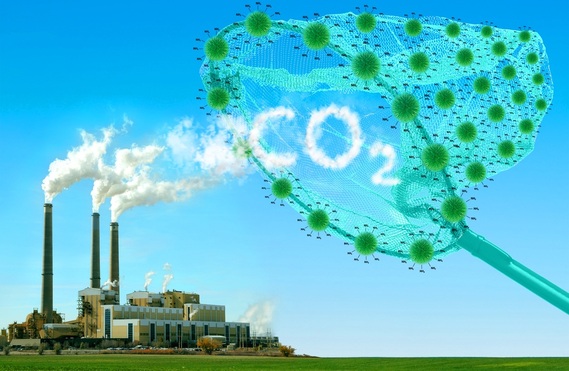For the first time, researchers have demonstrated that CO2 captured from the air can be directly converted into methanol (CH3OH) using a homogeneous catalyst.
The benefits are two-fold: The process removes harmful CO2 from the atmosphere, and the methanol can be used as an alternative fuel to gasoline. The work represents an important step that could one day lead to a future “methanol economy,” in which fuel and energy storage are primarily based on methanol.
The study was led by G. K. Surya Prakash, a chemistry professor at the University of Southern California, along with the Nobel laureate George A. Olah, a distinguished professor at the University of Southern California. The researchers have published their paper on the CO2-to-methanol conversion process in a recent issue of the Journal of the American Chemical Society.
“Direct CO2 capture and conversion to methanol using molecular hydrogen in the same pot was never achieved before. We have now done it!” Prakash told Phys.org.
Over the past several years, chemists have been investigating various ways of recycling CO2 into useful products. For example, treating CO2 with hydrogen gas (H2) can produce methanol, methane (CH4), or formic acid (HCOOH). Among these products, methanol is especially attractive because of its use as an alternative fuel, in fuel cells, and for hydrogen storage.
The chemical industry currently produces more than 70 million tons of methanol annually because the simple compound also serves as a building block for many larger compounds, including two of the most highly produced organic compounds, ethylene and propylene, which are used to make plastics and other products.
A key factor in the CO2-to-methanol conversion process is finding a good homogeneous catalyst, which is essential for speeding up the chemical reactions so that methanol can be produced at a fast rate. The problem is that these reactions require high temperatures (around 150 °C), and unfortunately the heat often causes the catalysts to decompose.
In the new study, the researchers developed a stable catalyst based on the metal ruthenium that does not decompose at high temperatures. The catalyst’s good stability allows it to be reused over and over again for the continuous production of methanol.
“Developing stable homogeneous catalysts for CO2 reduction to methanol was a challenge,” Prakash said. “Majority of the catalysts stopped at the formic acid stage. Furthermore, we needed a catalyst that could reduce carbamates or alkylammonium bicarbonates directly to methanol. We have achieved both with our catalyst.”
With the new catalyst, along with a few additional compounds, the researchers demonstrated that up to 79% of the CO2 captured from the air can be converted into methanol. Initially the methanol is mixed with water, but it can be easily separated out by distillation.

Carbon Dioxide Caught From Air Can = Methanol Fuel
Looking at the work from a broader perspective, the researchers hope that it may one day contribute to a methanol economy.
This plan involves developing an “anthropogenic carbon cycle” in which carbon is recycled to supplement the natural carbon cycle. In nature, carbon is continuously being exchanged, recycled, and reused among the atmosphere, oceans, and living organisms, but nature cannot recycle the carbon from fossil fuels as quickly as humans can burn them. Humans could counteract some of the CO2 we release by converting some of the carbon back into an energy source such as methanol.
More information on the anthropogenic carbon cycle can be found in this Perspective piece by Olah, Prakash, and Alain Goeppert.
As a next step, the researchers plan to lower the catalyst operating temperature and improve its efficiency.
“We will continue the studies to develop more robust catalysts that work around 100 to 120 °C,” Prakash said. “We would like to perform the chemistry in a preparatively useful way, wherein there are no solvent or reagent losses.”![]()
Source of Information: Phys.org
